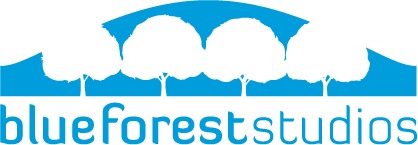Let’s talk about aerial video….
Simply put, it’s footage shot from the air. Back in the day, that meant hiring a courageous videographer and strapping him/her to a helicopter (and spending A LOT of money).
I’m not going to lie, I kind of miss those days. There’s something oddly romantic and definitely adventurous about getting your shot that way. But, that form of video was also inaccessible to your average marketer with an average budget. Today’s aerial video is drone video. It’s high-tech, convenient, affordable (no helicopters needed!), and if done professionally- very good.
…and drone video
Most people assume that drone videography is the purview of architects and real estate developers, and it’s true that drones are widely used in those industries.
However, aerial drone video can creatively elevate (no pun intended) any commercial video by adding a sense of distance, scale, and majesty.
The trouble is everyone wants to operate a drone now; after all, it’s really fun. But too many amateurs in the market can lead to a lot of fails. So- how do you get it right? Obvious answer: hire us :) But, if you’re a burgeoning new drone videographer, we’re happy to share some tips.
Here’s what our Blueforest Studios drone videographers have to say:
Top 10 best practices in drone videography
The 5 Practical tips:
Battery Life. Ugh- yes- it’s #1- don’t watch your battery and your very nice drone drops out of the sky! Drone batteries don't last long since they have to power the drone itself and the gimbal. Make sure you keep an eye on the battery and land with ample time before the battery dies (about 30%). Also, don't leave your batteries in the car overnight if it’s cold outside. You can’t fly on cold batteries, and you’ll find yourself sitting in the car blasting your heater on your drone batteries for 15 minutes while the beautiful sunrise passes you by.
Location. Be aware of different flight zones before you plan your shoot. Some areas may be completely off limits for flying while others you have to gain permission beforehand.
Get a second crew member. Yes, high-quality drones have safety cameras to prevent collisions, but they don’t all have side facing cameras. You risk flying your drone smack into a building while trying to get the perfect shot. Having a second crew member watch the path of the drone while you monitor the shot can avoid a catastrophe.
Get insurance. Don’t risk it. Drone insurance is easy and affordable. You can get insurance for the time you are flying for as little as $10/hour. We like the Verifly app.
Know your settings. Learn the automated settings of your drone very well. There are many settings that can be used to get good orbitals, or push ins, etc, and you can get some really creative looking shots without manual controls.
The 5 Make it Professional tips:
Keep it slow. Getting a good cinematic shot requires smooth, slow movements. Most drones are capable of tremendous speed. This means that an untrained pilot will introduce moves that are too fast and have stutters and bumps and corrections that make the shot look amateurish. This can be overcome with some of the DJI automated programs but the best bet is to get good at doing the slow steady moves manually.
Watch the glare. If you are filming highly reflective surfaces like the ocean, cars, etc use a polarizing filter to cut down on glare and make your footage look super detailed and textured.
Time of day. When in doubt, you will always get better shots at sunrise and sunset, especially if you are filming anything involving trees and nature. This means you may be hiking through grass and woods with a lot of morning dew to get a good vantage point. Wear sturdy waterproof boots!
Filming vs editing. If your drone can film at a higher frame rate like 60fps and you are editing your footage at 24fps or 30fps, you can achieve very smooth camera moves by filming at 48 or 60 fps and then slowing it down to your editing frame rate.
Filters for cinematic effect. Use ND filters to lock your shutter speed into a lower setting such as 1/48th if you are filming at 24fps. Then when you have fast movements they will blur out nicely and give you an additional smooth cinematic look. The blurry areas will enhance the feel of fast movement.
Our licensed, Part 107-certified drone pilots like the DJI Phantom 3 Pro. We also use a Rhino Slider and a Panasonic GH5 to film motion timelapse shots.
Creative friends- reach out if you’re looking for more advice, or feel free to comment below on your best tips. We’re always happy to share experiences with our peers in the creative community.
Brand marketers- contact us to find out how aerial drone video can enhance your next commercial video. We’d love to help! Check out our aerial reel for sample shots.


